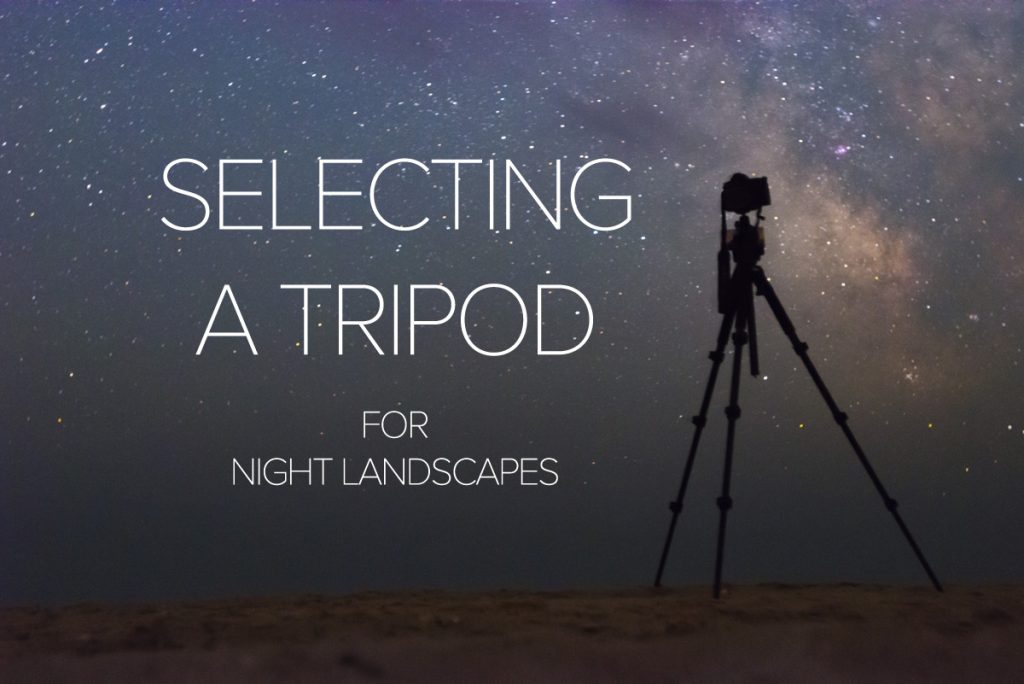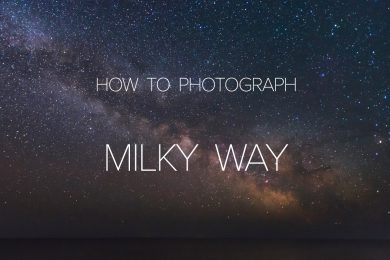Selecting a tripod for night landscapes
Almost always novice photographers make their choice in favor of affordable cheap models that completely satisfy their primary needs. But it’s no secret that working on the night scenery provides for trips far beyond the city and even many days of hiking away from civilization. All equipment along with you will have to go through the miles traveled, bad weather conditions and perform a variety of tasks, including creating panoramas or using a tracker.
What are the qualities that a tripod capable of in total darkness, in the wind and in the swamp should help you create high-quality pictures and not fail at the most crucial moment? What to look for when choosing?
Criteria, in general, are the same as for a conventional landscape survey, as well as the conditions it provides. There are several nuances that matter precisely in the case of photographing the starry sky, but, let’s take everything in order.
1. Maximum load
Four or five kilograms will be enough for any set of even professional equipment and compact mounts for shooting with the lead. Do not chase the numbers in this indicator, because in addition to high prices, this will mean a weighting of the tripod itself. Hanging more than the declared can sometimes be, most importantly – do not abuse.
2. Own weight
In conditions of multi-day hikes, your back will be very grateful for the light tripod, which does not burden excess weight. There are many quality models of average price categories that weigh just over a kilogram without a head.
3. Folded Length
It’s nice when your tripod fits easily in a backpack or is compactly attached to the contour and does not cling to the branches. Less than half a meter in the folded form without a head – this is a very good indicator.
4. Number of leg sections
It should be understood that each additional section adversely affects the stability of the tripod, but at the same time reduces its size when folded. Three sections are reliable, but still not compact; Five – pleasantly surprised by the miniature, but the stability will be worse. Four sections (will have three locks) – the best choice.
5. Lock on the legs of the
This element does not affect the quality of the tripod itself, but it is important for the convenience of working with it. There are two main types of locks:
5.1. Clip lock – quickly and conveniently to lay out and collect a tripod, besides an instant visual inspection is enough to understand to the end whether it is clamped. However, in time such locks may be weakened or, from the very beginning, do not give a sufficiently strong fixation. It’s unpleasant, but it’s very easy to do with the adjusting screw on each lock.
5.2. Twist lock – has no protruding parts, so it is very convenient to transport. Safely fixes the legs of the tripod, but, alas, it takes a long time. In addition, a visual inspection of such a lock will not say whether it is clamped to the end – it will always be necessary to try.
Honestly, I can not stand twist locks. My first tripod was exactly this and I fussing with them, especially in the cold, more than once prevented me from reacting to the situation in time and taking the photo.
Although night shooting at a superficial impression it a leisurely activity, the ability to quickly set up a tripod and get to work is an important characteristic that you should pay attention to.
6. Material
Lightweight carbon fiber, although not as stable as aluminum, but absorbing vibrations well is the best choice for travel and landscape photography.
7. The central column
Column is necessary first of all when it is necessary to adjust the height to the minimum. This is much more convenient than customizing each of the three legs individually. In addition, if a compact model is chosen, many will not get it to the breast as a result, and from my own experience I say that it’s damn inconvenient to work every time in a semi-bent position – you want to either become normal or fully sit down. The central column will help at least somehow make up the height lost for the sake of the miniature of the tripod. Of course, this will significantly increase the vibration, especially in the wind, so when you need the maximum stabilization, it is better to wait and not to raise the column altogether.
If you try to shoot from the lowest point, the column will become a stop on this indicator and may interfere with the implementation of the intended one. The ideal option is a tripod with a central column, which, if necessary, can be disassembled or removed.
8. Angle of the tripod legs opening
A good tripod should have an opening angle of as close to 90 degrees as possible. Otherwise, it again creates restrictions on the minimum height. And, of course, each leg should be able to adjust the angle independently of the others – this is very convenient when setting a tripod on an uneven surface or slope.
Models with props are not recommended. This design enhances stabilization, but will create a lot of inconvenience in all of the above cases.
9. Cargo hook
Useful part, which is equipped with many tripods. Ideally, it should be removable. The suspended cargo from below will make the whole structure much more stable. But in fact before this rarely comes. I, for example, having this hook included, never used it.
10. Leg tips
Like the hook, this is just a pleasant addition, whose absence should not make you reject the chosen model. Again, I, having spikes in the tips of my tripod, never showed them.
11. Head
This is a completely separate purchase, which has nothing to do with the tripod. Forget about the models of the tripods, where this part is not removable – as in the case with the camera and the lens, it is better to give in the future the ability to change something and complement it than to forever bind yourself with one universal solution.
When You choosing a head, pay attention to how much weight it can withstand. The mechanism of working the head is not so rude and exploiting this thing on the edge of its possibilities is a bad idea.
It is very important to provide for a quick release plate of the head. It is very infuriating every night for a long time fooled with carvings, especially in the cold.
There are 3D-haeds and ball tripod heads:
10.1 The three-axes allow you to composite the frame separately in each plane – it takes time, but it’s very convenient in the night shooting, where you often have to work almost blindly.
10.2 Ball heads are good for their compactness and speed of operation, but at night you will experience a lot of inconvenience, even in such simple things as leveling the horizon, because every time after weakening the clamp your entire setup goes into “free swimming”.
The choice, of course, is obvious. As a basis, it is better to take a reliable 3D head, capable of withstanding a lot of weight. But if you plan to shoot with a tracker in the future, then you can not do without a second head, and only the ball is suitable for this role. And that is a very good option for replacement for many cases that do not require careful adjustment of the frame and heavy load.
By the way, at the time of writing the article, my main 3D head broke and while it’s under repair, I use ball head in all my shoots without any serious inconveniences and limitations.
12. Price
Tripods that suit us, this is the average price category. Such models will please you with their quality, but at the same time they will not provide reinforced concrete stabilization. It is worth to expect about 300-400 dollars for this. It is better to start with a good tripod and then look for a head for surrender. No need to save. Unlike cameras, a tripod is a long-term investment and, if properly handled, it will serve you for decades. You can at first be content with what you do not mind spending an extra $ 50-100, but sooner or later you will realize that this money could be invested in a quality model that you still have to buy. It is worth once to work with a normal tripod and the desire to reconcile with the shortcomings of cheap tripods disappears forever.
If there is an opportunity to hold a tripod in hands before, check the efficiency of its entire design – use this: fold it up, inspect the quality of the clips and legs of the tripod legs. Also check the convenience and speed of establishing your camera with all the lenses. Pay special attention to the efficiency and accuracy of the work with the future tripod and all its parts. The fact that at a superficial acquaintance it will seem only a small inconvenience, during the shooting itself can turn into a real nightmare.
I will add that I have been using the qualitative, light and fairly stable tripod of the middle price category. There were about 100 hikes, several thousand kilometers passed and countless photos made in the harshest weather conditions. During this time my tripod turned into a reliable and indispensable assistant, without which I simply can not imagine my travels. In our genre, as in any other, a qualitative and colorful result, on the technical side – merit not only the camera, but the tripod;)


